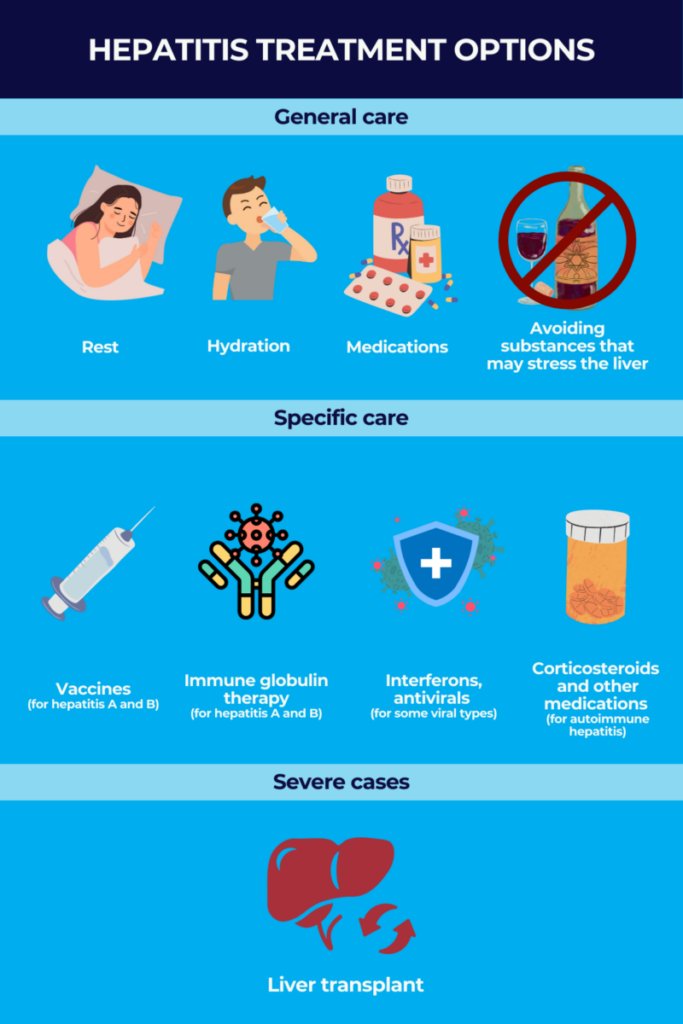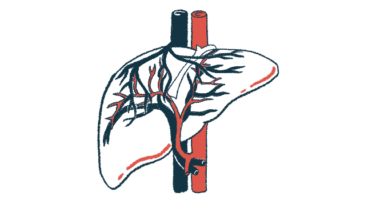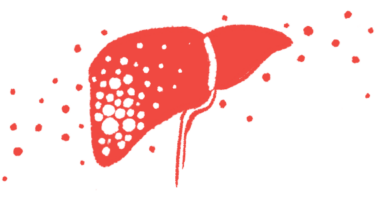Hepatitis treatment and management options
Last updated Feb. 1, 2024, by Marisa Wexler, MS

Hepatitis refers to inflammation of the liver. There are several types of hepatitis, and the disease can cause a wide range of manifestations; some people may have mild hepatitis symptoms that don’t cause notable issues, while others may have life-threatening liver problems.
A range of hepatitis treatments may be used, including therapies to address the root cause of liver inflammation, as well as supportive care that seeks to keep the patient healthy and comfortable. Getting appropriate treatment after a hepatitis diagnosis is crucial for managing the disease and lowering the risk of serious complications of hepatitis such as liver failure. Research and clinical trials that seek to identify new and better ways to manage the disease are ongoing.
How hepatitis type affects treatment
There are several hepatitis types, each with different underlying hepatitis causes — some forms are caused by viruses, while others occur due to an autoimmune disease or toxins that damage the liver.
Treatment of hepatitis depends on the specific disease type and cause, as well as the individual patient’s clinical condition. The aim is to keep the person as healthy as possible and minimize or eliminate the root cause of liver inflammation.
All forms of hepatitis can cause liver damage, and in severe cases, this can lead to cirrhosis (extensive liver scarring) and liver failure, where the liver isn’t able to function properly. Some types of hepatitis are associated with an increased risk of liver cancer.
Regardless of the underlying type, if liver damage becomes critical, a liver transplant — where a healthy liver from a donor is implanted into a patient — may become necessary.
Hepatitis A
The hepatitis A virus (HAV) is spread mainly by contact with feces from infected people, and it’s usually acquired by consuming food or water that’s been contaminated.
Vaccines are available that can help to prevent HAV infection. Vaccination is recommended for anyone who may be at risk for encountering the virus or developing serious illness from it, including:
- people living in or traveling to places where HAV is common
- people who use injection medications or recreational drugs
- men who have sex with men, or people of any gender/sexual orientation who regularly engage in sexual activities involving the anus
- people who have other underlying liver diseases
- healthcare workers
- food handlers.
The hepatitis A vaccine can be used as a post-exposure prophylaxis — meaning if a person believes they have been exposed to the virus, getting the vaccine after exposure can help reduce the risk of infection. This kind of prophylaxis vaccination is most effective when given within two weeks of exposure to the virus.
People who don’t have access to the vaccine or who can’t be vaccinated due to other medical reasons can be treated with an injection of immune globulin (with antibodies against HAV), which can also be used for post-exposure prophylaxis. Immune globulin treatment typically confers protection for about three months.
When an infection does occur, there is no specific therapy for hepatitis A treatment; however, the infection typically resolves on its own without the need for specific interventions. Managing this type of hepatitis generally involves supportive therapies to keep the person healthy while the body fights off the virus. Supportive measures include:
- staying hydrated and eating healthy foods
- significant rest
- medications to ease specific hepatitis symptoms
- avoiding alcohol and other substances that may stress the liver.
Hepatitis B
Hepatitis B is the most common form of hepatitis and is estimated to affect about a third of the global population. The hepatitis B virus (HBV) is spread by contact with bodily fluids, including through needles or from pregnant women to their babies at childbirth.
Hepatitis B can be prevented with a vaccine. The World Health Organization (WHO) recommends that all babies receive an initial dose of hepatitis B vaccination on the first day of life, with two to three additional doses given over the following months. This vaccination schedule provides protection at least through adulthood, and probably for life.
The vaccine also can be used as a post-exposure prophylaxis to reduce the likelihood of contracting an infection after being in contact with the virus. It’s most effective when given within 24 hours of exposure. Hepatitis B immune globulin, an injection containing antibodies against the virus, also may be used for post-exposure prophylaxis.
Hepatitis B initially causes an acute infection, but there aren’t specific treatments used at this stage. Supportive care, including hydration, nutrition, and pain relief may be given as needed, alongside lifestyle changes such as avoiding substances that stress the liver.
Hepatitis B is often cleared from the body after the acute stage, but in some people — particularly those who are infected as young children (younger than age 6) — HBV can cause chronic hepatitis.
If this long-lasting infection results in active liver damage, specific treatments may be warranted, namely interferons and antiviral drugs. These chronic hepatitis B treatments may be given separately or in combination.
Interferons are usually the first-line treatment for HBV. They work by boosting the immune system’s ability to fight off the virus. The main interferon therapy used for HBV is peginterferon alpha, sold under the name Pegasys (peginterferon alpha-2a). Interferons can cause some side effects, including flu-like symptoms, fatigue, fever, muscle pain, and headache.
Antivirals work by interfering with a virus’s ability to grow and replicate inside the body. Three antiviral meds are usually the first choice to treat HBV:
- entecavir (sold as Baraclude and generics)
- tenofovir alafenamide (sold as Vemlidy, among others)
- tenofovir disoproxil fumarate (sold as Viread, among others).
Other antiviral medications that may be used for HBV include lamivudine (sold as Epivir) and adefovir (sold as Hepsera).
Most people who start on antiviral therapy for HBV continue taking these medicines for life.
Hepatitis C
Unlike HAV and HBV, there is no vaccine to protect against infection with the hepatitis C virus (HCV). Given that this virus is spread by contact with blood and bodily fluids, the main way to prevent infection is to minimize exposure — for example, by avoiding sharing needles for injectable drugs.
While some people will clear the virus within a few months without treatment, most people infected with HCV will develop a chronic infection. Antiviral treatment is recommended for virtually everyone with hepatitis C, though treatment may be withheld for people who are pregnant or actively awaiting a liver transplant.
The main medications used to treat HCV are direct-acting antivirals (DAAs), which are medicines that directly target the virus to prevent its replication. DAAs used to treat hepatitis C include:
- Sovaldi (sofosbuvir)
- Harvoni (ledipasvir/sofosbuvir)
- Zepatier (elbasvir/grazoprevir)
- Epclusa (sofosbuvir/velpatasvir)
- Mavyret (glecaprevir/pibrentasvir)
- Vosevi (sofosbuvir/velpatasvir/voxilaprevir).
There are several different genotypes (strains) of the hepatitis C virus, which is one of the reasons it’s been difficult to develop a vaccine. A few DAAs, namely Epclusa, Mavyret, and Vosevi, are considered pangenotypic, meaning they are usually effective for all HCV strains. Most other DAAs are only effective against specific strains of HCV, so what antiviral to use will be determined in part by which strain of HCV a person is infected with.
In addition to DAAs, other hepatitis C treatments may include:
- Pegasys(peginterferon alfa-2a)
- ribavirin (sold as generics only).
Modern antiviral therapies are usually effective at completely eliminating hepatitis C. With appropriate treatment, cure rates for HCV range from about 95% to 98% within two to six months.
Hepatitis D
Hepatitis D virus, or HDV, is unique in that it can only infect people who are also infected with the hepatitis B virus. There is no specific vaccine for hepatitis D, but because the virus only infects people who are also infected with HBV, vaccination for hepatitis B can help prevent hepatitis D.
Hepatitis D treatment mainly involves high-dose interferon therapies such as Pegasys. Often, patients also need additional treatments for the co-occurring hepatitis B infection.
Hepatitis E
Like HAV, the hepatitis E virus (HEV) is spread mainly as a food or waterborne illness due to contact with contaminated feces.
Preventive measures against hepatitis E mainly involve steps to limit exposure, such as avoiding contaminated food or water, ensuring that food (especially pork meat) is cooked appropriately, and avoiding uncooked foods (particularly shellfish). Personal hygiene steps, such as rigorous handwashing, also can help prevent the spread of HEV.
There is no specific approved therapy for hepatitis E treatment. As with HAV, managing it usually involves making sure the person stays hydrated, eats healthy, rests, and avoids substances that can stress the liver.
In some instances where patients have developed chronic hepatitis E, ribavirin and/or Pegasys have been used to treat the infection. In case reports, these treatments have generally been successful for clearing the virus, but there isn’t yet robust evidence demonstrating their efficacy in HEV.
Autoimmune hepatitis
Autoimmune hepatitis is a rare form of the disease that develops when the immune system accidentally starts to attack healthy cells in the liver. Treatment for autoimmune hepatitis is designed to suppress the immune system’s activity to reduce this attack.
The standard treatment consists of corticosteroids plus azathioprine. This combination is effective for achieving disease remission (meaning an absence of symptoms) in about 80% to 90% of patients, although patients may have a relapse if symptoms return, requiring additional rounds of therapy.
Specific corticosteroids used for autoimmune hepatitis include prednisone or budesonide. Usually corticosteroids are given first and then azathioprine, which is thought to reduce inflammatory immune cells, may be added if needed.
While corticosteroids are often highly effective for controlling inflammation, they can cause side effects, including mood disturbances and weight gain, especially if high doses are used for a long time. As such, healthcare professionals will usually try to find the lowest possible dose to use and minimize long-term therapy with corticosteroids.
Toxic hepatitis
Toxic hepatitis occurs when chemicals or drugs damage the liver, leading to inflammation. Toxic hepatitis can be caused by alcohol and other recreational drugs, as well as certain industrial chemicals and herbal supplements. Some medications, including acetaminophen (sold as Tylenol, among others), also can cause toxic hepatitis especially at high doses.
Treating toxic hepatitis generally involves identifying the substance that is causing liver damage, and then stopping exposure (e.g., abstaining from alcohol use). Usually, the liver is able to heal itself once the toxin is eliminated, but this recovery can take varying amounts of time depending on how much damage has accumulated. While the liver heals, supportive care such as hydration or pain relief may be given.
In instances of toxic hepatitis due to acetaminophen (an analgesic and antipyretic agent, to reduce pain and fever), a medication called N-acetylcysteine (NAC) may be given to help remove the toxin from the body. NAC is almost 100% effective if it’s given within eight hours of taking a toxic dose of acetaminophen.
Navigating treatment
Living with hepatitis often means a person will require lifelong medical care. This may include taking hepatitis medications along with regular healthcare visits to monitor their liver health.
In order to get the best results, it’s important that patients communicate openly with their healthcare providers, including being upfront and honest about behaviors that can increase the risk of some hepatitis types, such as sex with multiple partners or recreational drug use.
Patients should also communicate with their providers about any issues they have with prescribed therapies, including side effects or problems with the cost of treatment.
Several support groups and other resources are also available that can help people with hepatitis navigate life with the disease.
Liver Disease News is strictly a news and information website about the disease. It does not provide medical advice, diagnosis or treatment. This content is not intended to be a substitute for professional medical advice, diagnosis, or treatment. Always seek the advice of your physician or other qualified health provider with any questions you may have regarding a medical condition. Never disregard professional medical advice or delay in seeking it because of something you have read on this website.
Recent Posts
- Less invasive Kasai surgery works better for infants with BA: Study
- US states, doctors split with CDC on hepatitis B shots for newborns
- PSC-IBD study shows need for regional management guidelines
- Staying on top of MASH may mean not staying on the transplant list
- Common virus may play a role in ICP development, study finds
Related articles






